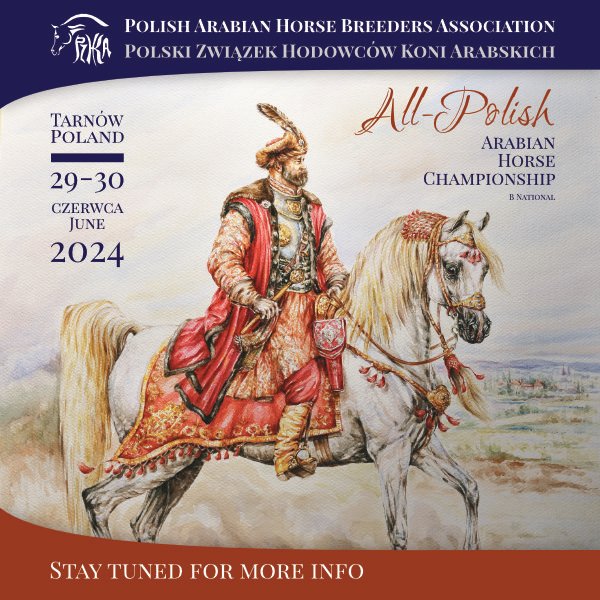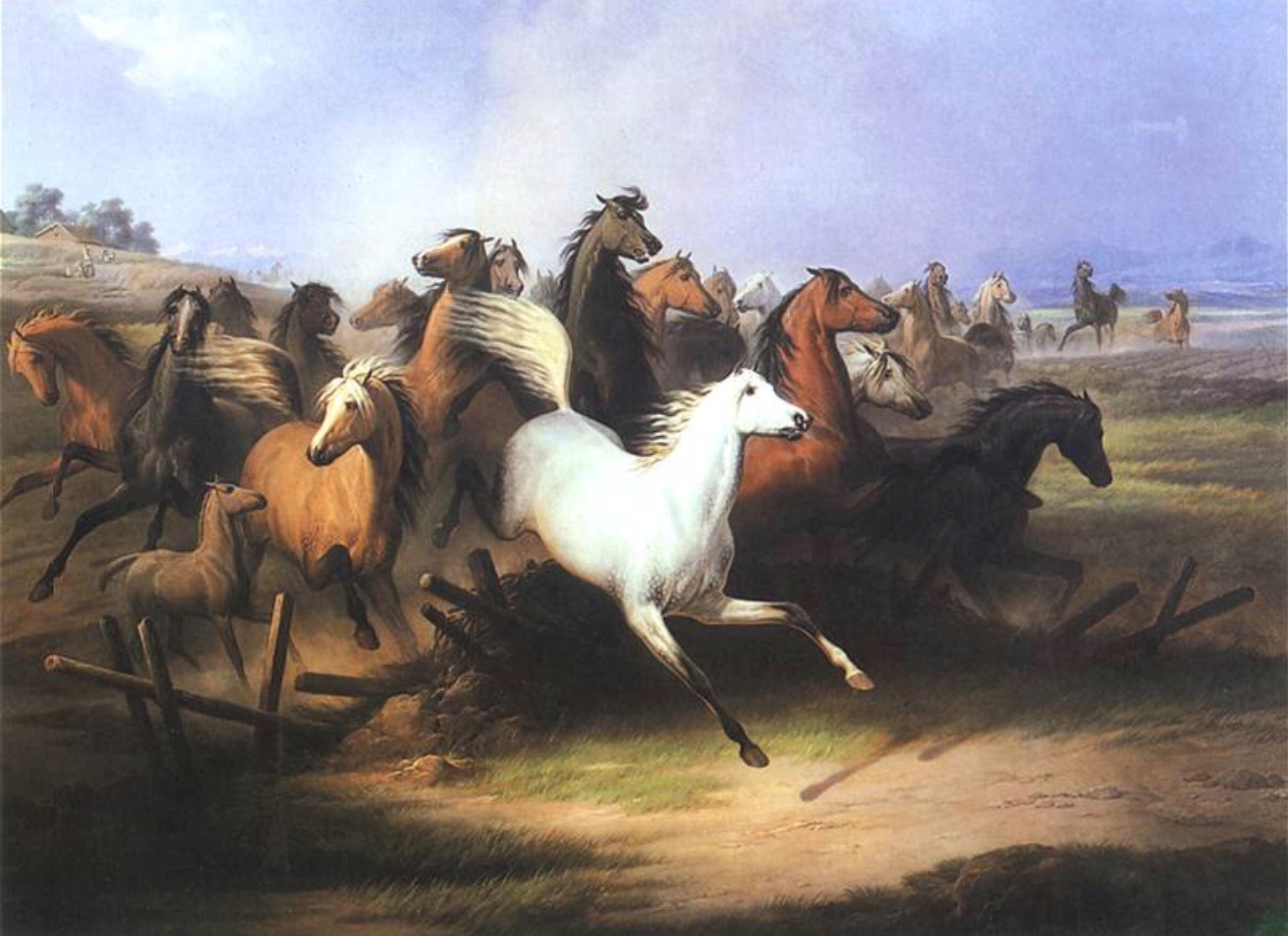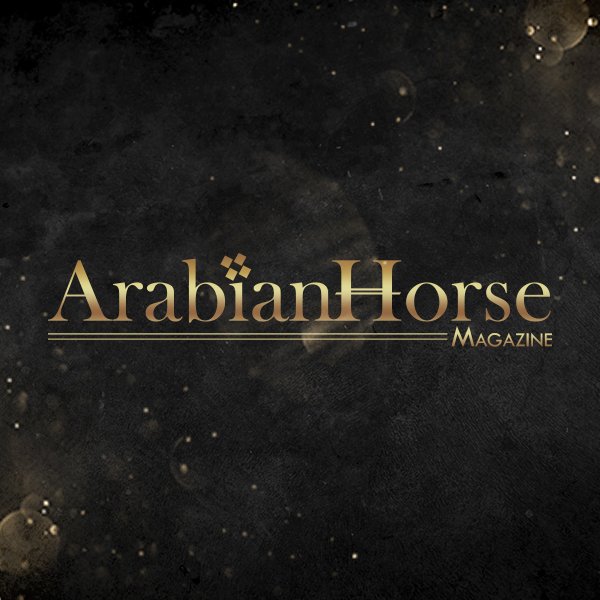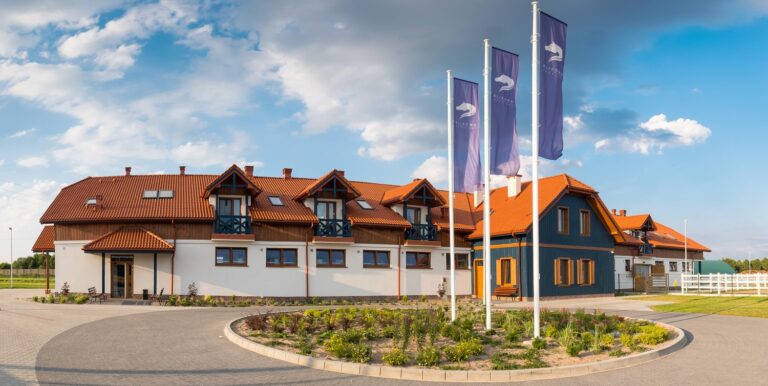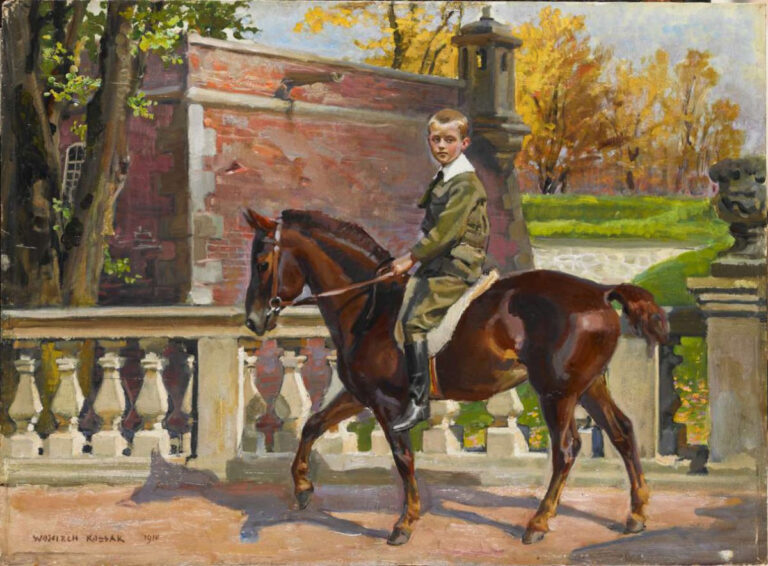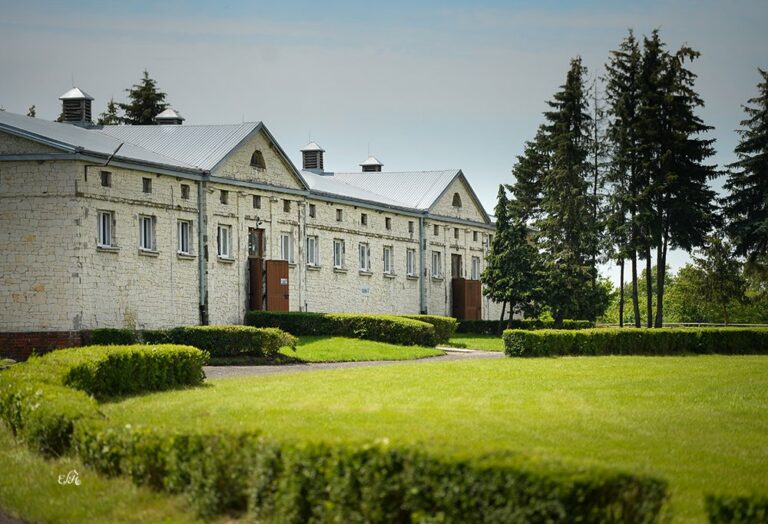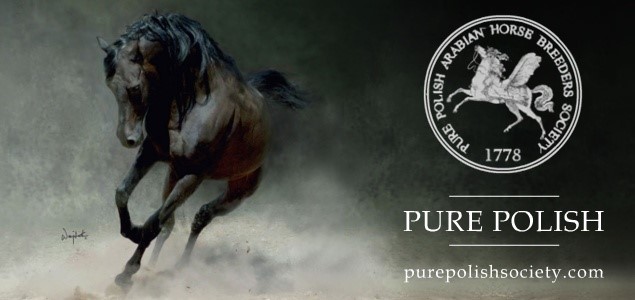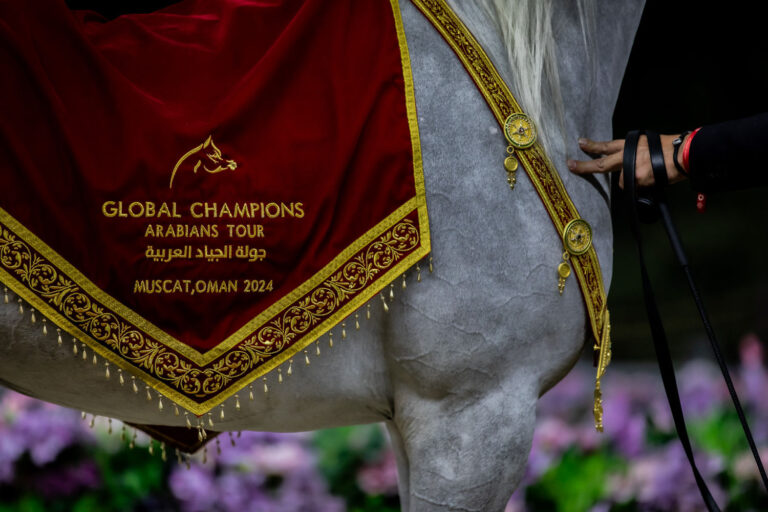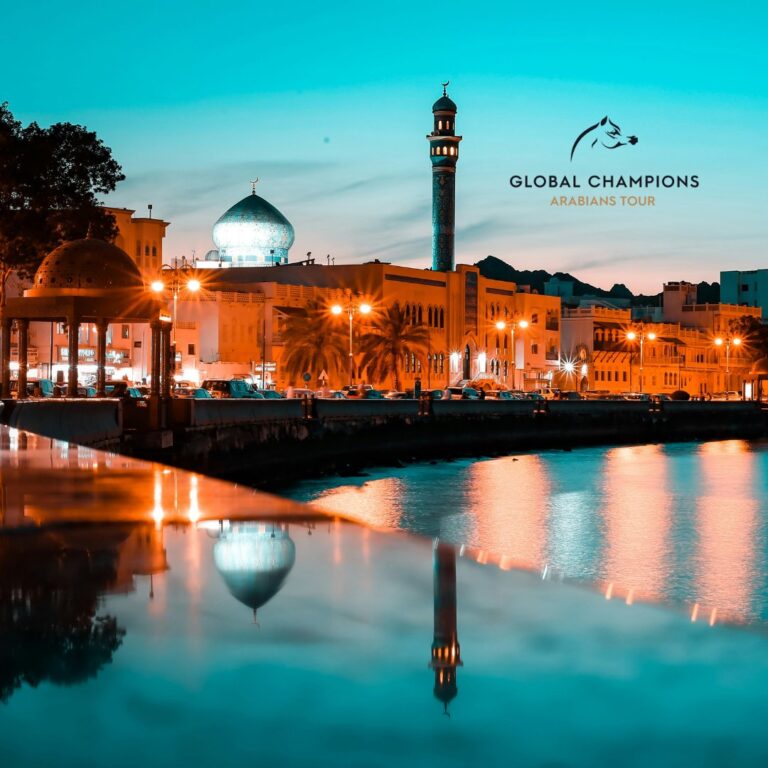Szweykowska, Milordka, Ukrainka, Wołoszka and Szamrajówka — how did Arabians end up in Poland? From the far desert …
The Arabian breed, formed over centuries in the deserts of Arabia due to specific geographic conditions, was genetically probably the result of mixing the blood of different horse breeds entering Arabia from the east, west and south. During the great conquests of the 7th-8th centuries, the Arabs, moving westwards, encountered Berber horses in Africa, and then the aforementioned breeds were mixed — that is, horses from southern Arabia with horses from northern Africa. It should be assumed that such horses came to Spain and southern Europe. After the conquests ended, with the rise of the caliphates and kingdoms, Arabia itself remained on the margins of the great Arab-Muslim empire. The Bedouins, on the other hand, lived their old way of life, keeping their traditions and customs. It was also then (around the 13th century) that the flow of foreign blood to the Arabian horse breed probably ended. In the following centuries, Bedouins and their horses only migrated across the deserts of Arabia: Central Arabia, Syria, Mesopotamia and Palestine. These movements were conducive to maintaining a uniform breed of Arabian horses. In the specific environment of the Arabian Peninsula, the characteristics that distinguish this breed were formed: bravery, beauty, dry tissue, speed and the typical gentleness of character. Europeans traveling in Arabia between the thirteenth and nineteenth centuries agree that the best Arabian horses can be found among members of the Anaza tribe, once nomadic in the interior of Arabia, who left the Nejdu deserts and settled in the desert areas of Syria and northern Arabia. Among the Bedouins, the descendants of the former nomadic horse breeders, various ancient traditions concerning the genealogy of Arabian horses are still alive today. They are mentioned by the first European explorer of Arabia, Niebhur (ca 1779), as well as by Count Wacław Seweryn Rzewuski, who wandered in the deserts of Arabia at the beginning of the 19th century and left the famous manuscript from this journey, which is a unique source of ethnographic knowledge about the life of the Bedouins and the horses they bred. It has undoubtedly been established that the type of the modern Arabian horse was developed at the beginning of the 7th century and was directly related to the rise of the Muslim religion.
On the borderlands of the Republic of Poland
The vast territory of the Republic of Poland and related interests, starting from the 15th century, inevitably led to a confrontation with the aggressive Ottoman Empire, which also included the Arabian Peninsula. Military and trade contacts in peacetime made it possible to import first oriental and then Arabian horses to Poland.
Arabian horse breeding from the beginning of its existence in Poland has been distinguished by special care and diligence. The dam lines were (and are) carefully cared for by Polish breeders. Among the 15 dam lines that are present in the Polish breeding program, five are the heritage of the famous Polish Borderlands studs, dating back to the second half of the 18th century. This extraordinary continuity, despite the historical cataclysms that swept through our country, invariably prompts us to wonder why Poles valued Arabian horses so much that for many generations, despite wars, plunder and, above all, the lack of state sovereignty, they maintained and even successfully developed the breeding of these horses. As a result of many generations of breeding work, a type of Polish Arabian was created, significantly different from the original Arabians brought from the desert. The refinement and consolidation of features have become a characteristic of Polish Arabians, significantly different from their ancestors and Arabians in the so-called Egyptian type. The foundation for the type and tradition of Polish breeding and its vision is basing on and cultivating dam lines of females born in these studs.
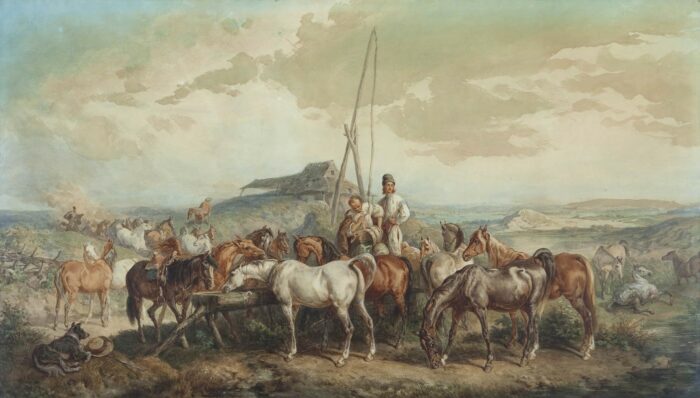
Biała Cerkiew studs
The oldest Arabian stud farm of the Borderlands was the one established in 1778 by the Grand Hetman of the Crown, Franciszek Ksawery Branicki, in the Szamrajówka chutor, belonging to the Biała Cerkiew estate in the Ukraine. Its many years of operation left in Polish breeding just one (recovered with great difficulty after World War I, and then also after World War II), but extremely valuable, dam line: Szamrajówka, 1810 bred by Biała Cerkiew.
Sławuta dam lines (Antoniny and Gumniska)
Among the studs of the Borderlands, the effects of which have survived in the form of dam or sire lines, the stud of the Sanguszko princes, originating from Sławuta, definitely stood out. The stud in Sławuta adopted a distinctly Arabian direction around 1804, that is, from the time of the expedition of Kajetan Burski, the Sanguszko’s equerry, for horses to Arabia. From that moment, until 1945, the Sanguszko breeding was carried out invariably in the Arabian direction, i.e. for 141 years (also in Antoniny and Gumniska near Tarnów). The number of their breeding was significant, which allowed for the selection of the best horses and the production and then preserving of entire families. 12 dam lines were established there: “(…) the oldest of the Sławuta families was descended from a mare without a name, born around 1790, which survived until the 1930s, reaching 10 generations, but no longer exists.“* From among the Sławuta families, there are currently four in Polish breeding: Szweykowska b. c. 1800, Milordka b. c. 1810, Wołoszka b. c. 1810, Ukrainka b. c. 1815. Equally important is the heritage of the Sławuta breeding in establishing sire lines. Until now, two lines have survived, which have issued many generations and are continued in Poland and successfully in the world. They are lines descending from the stallions: Ilderim or.ar. imp. 1900 to Sławuta, Ibrahim d.b. imp. 1907 to Antoniny.
Jarczowce dam lines (and Jezupol)
In the interwar period, the leading role in domestic breeding was played by horses derived from three mares brought from Arabia in 1845 by Juliusz Dzieduszycki, i.e. Gazella d.b., Mlecha d.b. and Sahara d.b. The Dzieduszycki stud in Jarczowce, much older, dating back to 1791, adopted the Arabian-only direction in 1845. It was then that Juliusz Dzieduszycki brought seven desert stallions and four mares from Arabia, including the three mentioned above – as it turned out – founders of dam lines that are so important today. The stud in Jarczowce (then continued in Jezupol) had operated for 73 years, that is until 1918. The well-reproduced Jarczowce dam lines are an extremely valuable breeding legacy of the Dzieduszycki family. Jarczowce also started two sire lines, of which one has survived to this day: Krzyżyk d.b. (born in 1869, imp. 1876 Jarczowce).
The end of breeding Arabian horses in the Borderlands came in 1918, when the studs, devastated during the Great War, were, along with the horses, completely destroyed (burned, murdered, demolished, looted) by the Bolsheviks. Only thanks to their export to other regions or countries, the priceless breeding material from many excellent studs has survived to this day. Including the most outstanding ones, i.e. Sławuta, Antoniny, Biała Cerkiew and Jarczowce with Jezupol. This allowed, after the rebirth of the Polish state, to start rebuilding breeding basing on the old families of Sławuta (and Antoniny), Biała Cerkiew, Jarczowce (and Jezupol). During the partitions, on the Polish lands of the Russian Empire, the only existing state stud, founded by Tsar Alexander I in 1817 in Janów Podlaski, contrary to popular belief, did not breed Arabian horses. Thus, all Arabian farms in Poland at that time were in private hands.
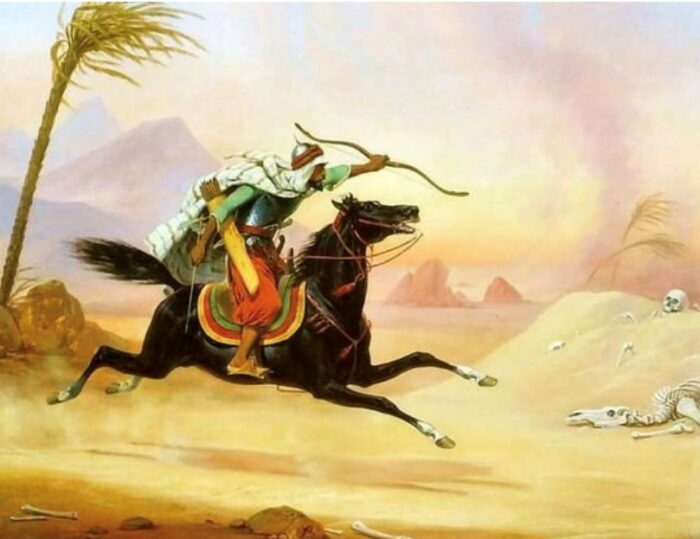
Stud books
In the studs of Polish magnates, from the second half of the 18th century, breeding was conducted in a modern way, establishing stud books and registers of purebred horses. It is thanks to this that Polish Arabians have such deeply documented pedigrees today. The need to use a brave and reliable mount in war and the problem of communication in vast areas during the period of peace forced the need to breed Arabian horses which were strong and sound, which in turn led to the extraordinary stamina of Polish Arabian horses. Polish breeders also understood this. After regaining independence, already in 1926, in place of the former war training, they launched performance trials on horse racing tracks. Until recently, these attempts were the basis for the selection of elite material in Polish breeding.
Until the 1970s, the population of Arabian horses in the world was not strictly defined. Different countries kept books and registers, but they were not kept on a uniform basis, which often led to misunderstandings and limited export opportunities, as well as broadly understood international cooperation. Even in the 1960s, well-known English breeders, Patricia and Sonia Lindsay, bought Arabian horses in Poland and only after they were entered in the English stud books, that is they were recognized as Arabians in Great Britain, they could be re-exported to the USA due to the fact that the American stud book did not recognize the Polish stud book. It is difficult to say whether this was due to the reluctance of the Americans to cooperate with the authorities of a hostile communist regime, or simply because of the business calculations that could be attributed to them, especially at a time when they were getting their own breeding on their feet.
In July 1967, at the initiative of the British Arab Horse Society, the first Arab Horse Breeders Conference was organized in London, attended by representatives of Great Britain, the USA, the USSR, Sweden, South Africa, Denmark, Spain, Portugal, the German Federal Republic, the Netherlands, Jordan and Israel. Despite the invitation, there was no Polish delegation whose attitude of the then Polish authorities towards Arabian horse breeding was negative. It was at that time that the official Gomułka propaganda tried to convince the public that horses eat oats needed for pigs, so as unnecessary parasites — Arabian horses, had to be liquidated. The absence of the Polish delegation at the conference in London was very unfavorable for our breeding, because at this conference a public debate began on the type of Arabian horse and the rules of keeping stud books. Despite the negative attitude of the Polish authorities to this initiative, Polish interests were officially represented by Stefan Zamoyski, a member of the British Arab Horse Society. The same Zamoyski, thanks to whom Poland owes the recovery of Polish Arabians taken by the Germans from occupied Poland. And the same Zamoyski, who was forbidden by the Polish state to return to his homeland, had taken all his property and hope for life among his countrymen, was now fighting for the good of his country and Polish breeding. Thanks to his involvement, Polish interests were constantly and effectively represented. The result of the first Arabian horse breeders’ conference was the decision to create an international association of Arabian horse breeders.
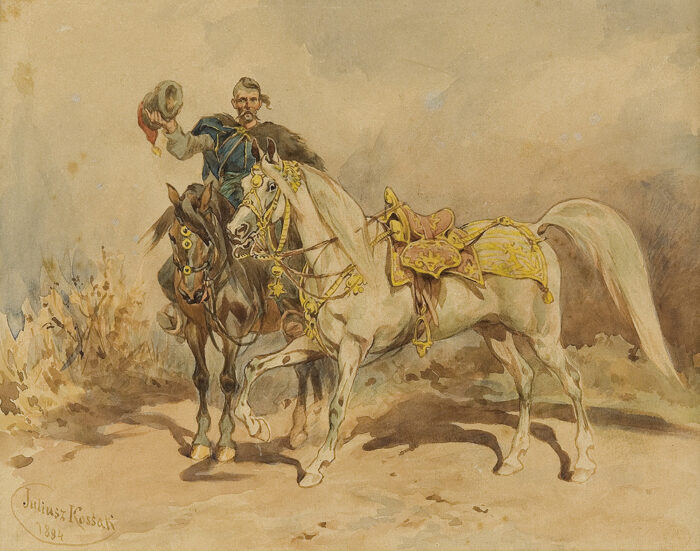
However, it was in the 1960s that the lucrative export of Polish Arabians began, which made the then authorities see the source of priceless currencies in Arabian horses. At the next conference, which was held in 1970, also in London, the Polish delegation was present this time. Materials were previously prepared to present a position on the important issue of recognizing our horses as purebred, and thus the international recognition of the Polish stud book. The most important point of this stance was to oppose the theory promoted at the time that an Arabian horse can only be considered a horse whose pedigree in all lines is derived from the original Arabians imported from the desert (abbreviated as: d.b.). Such was not acceptable for Poland, because many of our horses, the pedigree of which could not be derived in all lines from d.b. horses at that time, had a proven descent up to 15 generations or more, i.e. around 150 years back. It was a phenomenon, incomprehensible to the world, because the existence of such deep pedigrees was a phenomenon in Arabian horse breeding in the world and it concerned almost exclusively Polish horses, hence the postulate not to recognize these pedigrees for Polish breeding was very dangerous.
An unfavorable stance towards Polish breeding was presented despite the participation of Polish horses in western, and in particular, American breeding. Apart from numerous exports, incorporated into breeding (but illegally) were: the son of Ofir, Witeź II, the stallion Lotnik, as well as Iwonka III and Wierna with her offspring, the two-year-old Werra and year-old Wierka, taken to the United States in 1945 by the US Army. Perhaps the fact of looting the mentioned horses was also the reason for the fear of recognizing the Polish stud book, and thus the strengthening of Polish claims to these horses, as the Polish government issued an (ineffective) protest against their looting. Although the pedigrees of the above-mentioned horses can be traced to d.b. horses, but in the pedigree of the highly valued Skowronek, we have the dam line of the mare Iliniecka 1815, bred in Sławuta. It is difficult to find a sire with an older, more proven pedigree than the one presented by Skowronek, and therefore also his offspring, because it is Polish Arabian horses that have the deepest pedigrees in the world, although it is often impossible to prove the origin of the d.b. Many registers and studbooks were lost during the wars that passed through Poland in the 19th and 20th centuries, but it was their use that also influenced the fact that Polish horses represent the purest type of Arabian horse and display a reliable power of inheriting the characteristics of their breed. An additional argument was the influence that Polish Arabian horses had on world breeding through stallions exported to other countries, apart from Skowronek and Witeż II – Ursus, Van Dyck, Wyrwidąb or Towarzysz Pancerny, and then Bask.
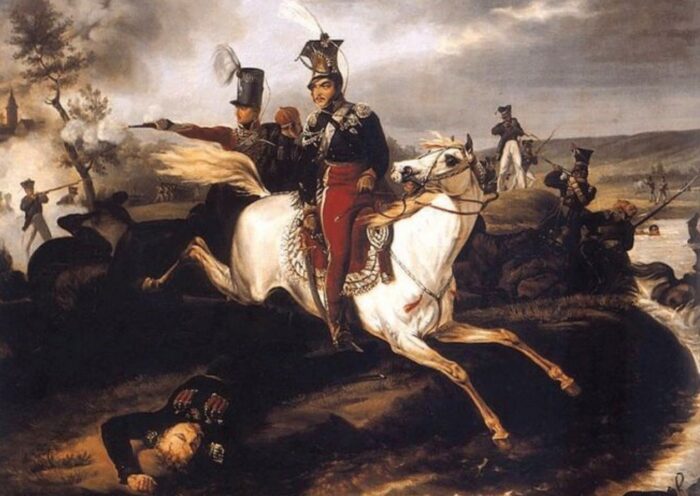
WAHO — the definition of a purebred Arabian horse
For the second conference, which took place in August 1970 in London, the Polish delegation prepared and equipped itself with the substantive foundations and arguments regarding the purity of Polish Arabian pedigrees developed by prof. Witold Pruski.
The conference was attended by a Polish delegation composed of: K. Molendowa (PASB editor), A. Krzyształowicz and Z. Brylski. As before, Polish arguments were actively supported by Stefan Zamoyski, acting on behalf of the organizer. The result of the conference was the establishment of an international organization under the name of the World Arabian Horse Organization (WAHO). The eight-person Temporary Committee was composed of a representative of Poland, director of Janów Podlaski Stud, Andrzej Krzyształowicz, who then served for many years as a member of the WAHO Executive Committee. The international rules for keeping stud books as well as the rules for the identification and entry of horses in the books were established during several successive meetings of the WAHO Executive Committee. International regulations have been developed gradually, introducing the obligation to mark horses’ blood types and carrying out detailed checks of the studbooks in individual countries. After all the conditions were met, the studbooks were recognized in subsequent countries. Most of the Polish postulates regarding the recognition of Polish dam lines were soon fulfilled.
Today, Poles are members of the international governing bodies of Arabian horse breeders WAHO and ECAHO, but unlike their great predecessors, they do not represent the country of which they are citizens and owe their international careers. There is little evidence that they work for Polish breeding, but much that they work exclusively for themselves.
Currently, an Arabian horse is a horse entered in a stud book recognized by the World Arabian Horse Organization. The Arabian horse population was closed under these books. This means that a country that does not have its own stud book may establish it, but may only enter horses entered in the stud book already recognized by WAHO. The right to enter, of course, applies to the formal side. The entry itself does not decide what an Arabian horse should look like. WAHO defines the Arabian horse standard as a certain Arabian ideal that breeders strive for.
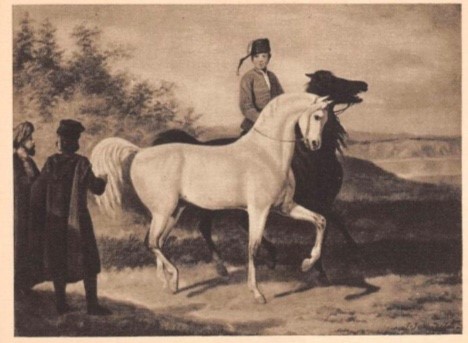
The breeders who shape this breed will decide what the Arabian horses of the 21st century will look like. Currently, it is difficult to say whether the Arabian breed will manage to maintain its most valuable breeding traits, i.e. stamina and beauty, and especially the balance between these traits that is not easy to maintain. What we have been observing in the last 20 years in world breeding does not fill us with optimism. The divergence of the Arabian horse type into the show (decorative) and racing (mini Thoroughbred) horse is not conducive to the breed’s development. Bi-direction in breeding is contrary to the Polish breeding program. Polish breeding, as the only one, has developed a model of a harmonious combination of beauty and stamina, which is supported by the stamina trials conducted continuously since 1926 on the racetrack. Maintaining the balance between beauty and stamina is the only chance for Polish Arabian horses to maintain their identity and high quality developed over generations. If Polish breeding deviates from its own breeding program – it will be left with nothing.
* W. Pruski “Dwa wieki polskiej hodowli koni arabskich (1778-1978) i jej sukcesy na świecie“
Sources:
W. Pruski “Dwa wieki polskiej hodowli koni arabskich (1778-1978) i jej sukcesy na świecie“
H. Sztuka, M. Grzechnik “Kresowe dziedzictwo” polskiearaby.com (2019)
H. Sztuka “PASB — 90 lat” Tutto Arabi (09/2016)
PASB


